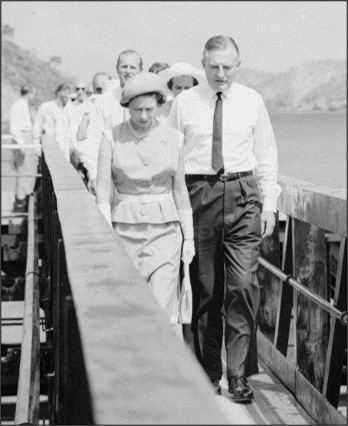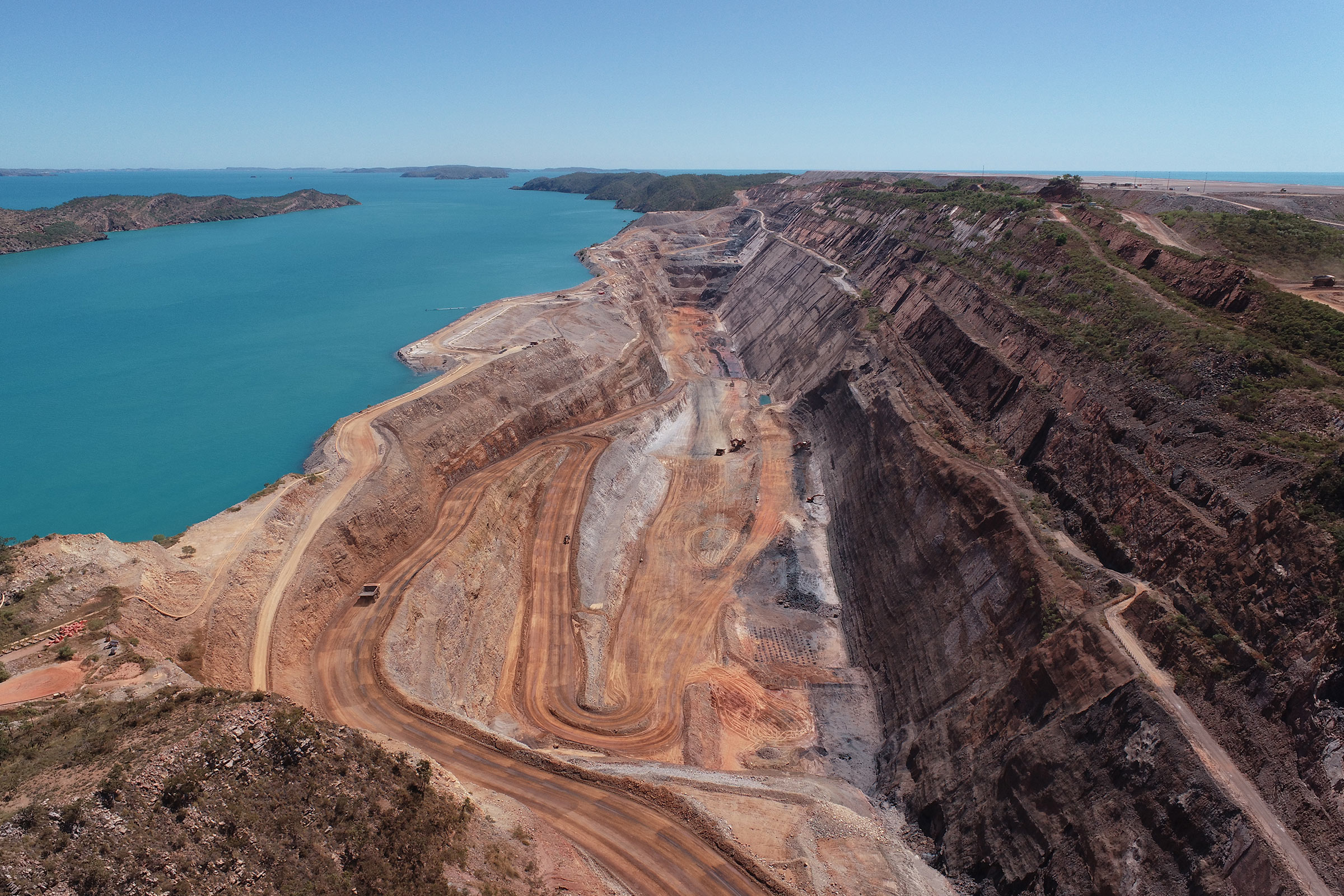As industrial history goes, it is remarkable that two islands off the Kimberley coast of Western Australia are so entwined in the development of the State’s vast iron ore industry.
Koolan and Cockatoo islands – known as the Iron Islands throughout the second half of the 19th Century when peal luggers regularly stopped to collect ballast – have witnessed the changing business fortunes of companies that were the forerunner of BHP, the growth of the iron ore giant, and the battle between State and Federal governments over iron ore exports.
Amateur historian John Phaceas, who works for Mount Gibson Mining which now owns the operation on Koolan Island, took a deep dive into islands’ past and discovered some extraordinary facts and twists of fate.
The first mining lease issued for Koolan and Cockatoo Islands was in 1907, to Percy Kean from the Australian Prospecting Association, but efforts to develop the leases were interrupted by WWI, and the Koolan lease was forfeited in 1918.
In 1920, at the behest of the Federal Government, the WA Government despatched State Mining Engineer Alexander Montgomery to survey the deposits on both islands. In January that year, he reported recoverable resources of 20Mt on Cockatoo and 76Mt on Koolan Island grading 61-69% Fe.
Montgomery’s report proved critical in the eventual development of both islands. Later that year, the Queensland Government acquired the Cockatoo Island lease to support the proposed development of a steel plant in Bowen, while the Federal Government took out an option over the abandoned Koolan Island lease.
The Queensland scheme failed to progress, and in 1927 the Cockatoo lease was sold to Hoskins Iron & Steel – an early competitor to BHP Steel which was building a new steelwork at Port Kembla.
While AIS established an exploration camp on Cockatoo in 1929 it deferred mine development on Cockatoo to save money having instead secured a long-term agreement to source iron ore from BHP’s Iron Monarch mine in South Australia to supply the now successful Port Kembla steel mill.
In 1930, the abandoned Koolan Island lease was acquired by mining engineer Harold Buckley for the princely sum of just £150. By 1934, Buckley had succeeded in attracting the interest of Sir James Connolly who agreed to acquire the leases for £35,000. Connolly was an agent for UK mining and industrial firm HA Brassert & Co, which in turn had a relationship with Japan’s Nippon Mining Co, and considered Koolan presented an excellent prospect of supplying much needed iron ore to resources-bereft Japan.
The interest of a rapidly militarising Japan in Yampi Sound started to raise concerns in both Britain and Australia, particularly in the wake of Japan’s invasion of Chinese Manchuria.
A trade mission to Japan by external affairs minister John Latham and BHP founder Essington Lewis in 1934 reported back to the Government confirming that Japan was aggressively seeking new sources of raw material supply from the South East Asian region.
The Great Depression had by now taken its toll on AIS, prompting negotiations to merge its business with BHP. The merger was consummated in 1935, giving BHP full ownership of both the Port Kembla steelworks and Cockatoo Island. Work on Cockatoo however remained on hold.
Meanwhile, Brasserts had significantly progressed its negotiations with Nippon Mining, resulting in the establishment of jointly owned Yampi Sound Mining Co in 1936. Nippon sent a team of engineers and geologists to Koolan Island, ascertaining that the island likely hosted resources of more than 60mt, but conservatively estimated reserves at 40Mt. The joint venturers quickly commenced work on mine development with a view to supplying 10-15Mt of ore to Japan at a rate of 1Mtpa.
But Government and military concerns over Japan were building rapidly, prompting a study by the Commonwealth Geological Advisor Dr G Woolnough to ascertain the realistic extent of Australia’s iron ore resources, use and future potential needs.
Though the survey was not formally complete, in July 1938 the Federal Government announced its intention to impose an embargo prohibiting the export of any iron ore from Australia. Though the embargo would be “global” it would be implemented in late 1938 – coincidentally timed so that BHP would be able to satisfy its existing export contracts (mostly to the US).
Woolnough reported that Australia’s total known resources likely exceeded 250Mt, including 60-90Mt at Koolan Island. While that could meet contemporary demand for many decades, the early state of industrial development in Australia and the potential for significant consumption growth could see existing reserves exhausted within a generation unless they were preserved for domestic use and new resources found.
The onset of war the following year ensured that Koolan and Cockatoo remained dormant until after Japan’s defeat in 1945.
Immediately after WWII, the WA Government began looking for ways to re-ignite development in Yampi Sound, and in 1947 introduced the Iron and Steel Industry Act 1947 to WA Parliament. This was WA’s first State Agreement – agreements which have been the mainstay of major resource development in WA ever since.
Despite the agreement’s grand ambitions, progress failed to eventuate. The WA Government ultimately repealed the agreement by passing the Iron and Steel Industry Act Amendment Act in 1951, which cleared the way for WA’s second – and far more ambitious State Agreement in 1952 which ultimately facilitated the commercial development of both Koolan and Cockatoo Islands.
The BHP Steel Industry Agreement Act 1952 granted BHP long term leases and development rights to Koolan Island and nearby Irvine Island, and further extended BHP’s existing leases over neighbouring Cockatoo Island.
The Act required that BHP use Yampi Sound ores to support the establishment of an integrated iron and steel industry in WA, most notably by agreeing to establish a 50ktpa steel rolling mill at the planned industrial precinct in Kwinana.
BHP had resumed development activity at Cockatoo Island around 1944. Commercial production commenced in 1951 and had reached 2Mtpa by 1954. However, that was all for domestic use, primarily for BHP’s own steel business, with the export embargo still in place.
The continued embargo had remained a significant brake on BHP’s ambitions at Koolan Island.
With world industrial expansion gathering pace – most notably in Japan – WA Premier David Brand and his Development Minister Charles Court (supported by major companies such as BHP, CRA/Rio Tinto and WMC) began to lobby for the embargo to be lifted over new deposits in new areas such as the Pilbara and Mid West.
Prime Minister Bob Menzies, who had been directly involved in imposing the embargo in 1938, was initially reluctant to reverse the embargo, however a rapid increase in Australia’s trade deficit prompted him to make new export opportunities a priority and he announced a partial lifting of the embargo in 1960.
With the number of successful offtake agreements with Japanese customers rapidly mounting, BHP stepped up efforts to have the remaining embargo removed, which eventually occurred in 1966.
 The Brand Government – and BHP – then scored a major coup in 1963, with newly crowned Queen Elizabeth II and Prince Philip visiting Koolan Island as part of the Royal Tour, and in In January 1965, the first shipment of iron ore from Koolan was loaded onto the Iron Dampier, headed for BHP’s east coast steel operations.
The Brand Government – and BHP – then scored a major coup in 1963, with newly crowned Queen Elizabeth II and Prince Philip visiting Koolan Island as part of the Royal Tour, and in In January 1965, the first shipment of iron ore from Koolan was loaded onto the Iron Dampier, headed for BHP’s east coast steel operations.
Koolan hematite ore proved highly sought after by Japanese steel mills for its extremely high grades of up to 68% iron, but the high cost of maintaining a comparatively low tonnage and extremely remote mine meant it was no longer a core asset for BHP, given the far greater volumes, efficiencies, and margins possible at its newer and larger Pilbara operations.
BHP continued mining until the end of 1992 when readily accessible ore reserves were depleted, and the site was progressively decommissioned, and the leases relinquished.
At its peak, Koolan Island had a population of 950 people and had a school, police station, recreation facilities and shops, social club, bar, cinema, general store and swimming pool.
The modern history of Koolan commenced iaround mid-2001 when ASX listed explorer Aztec Resources applied for new tenements over the Koolan Island deposits.
In mid-2006 Mount Gibson announced a takeover offer for Aztec which was completed in early 2007, and it continues to mine there today.


